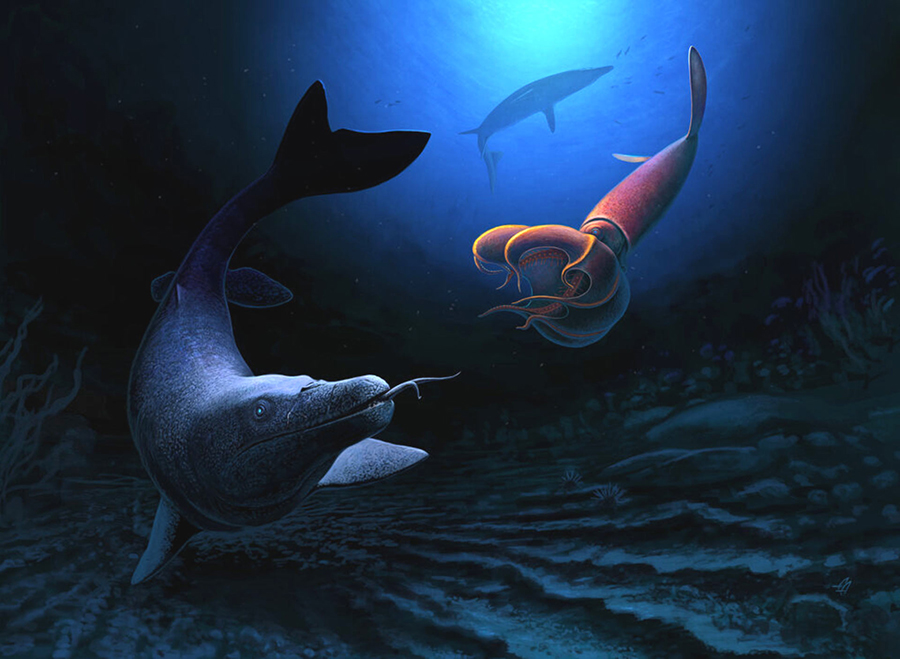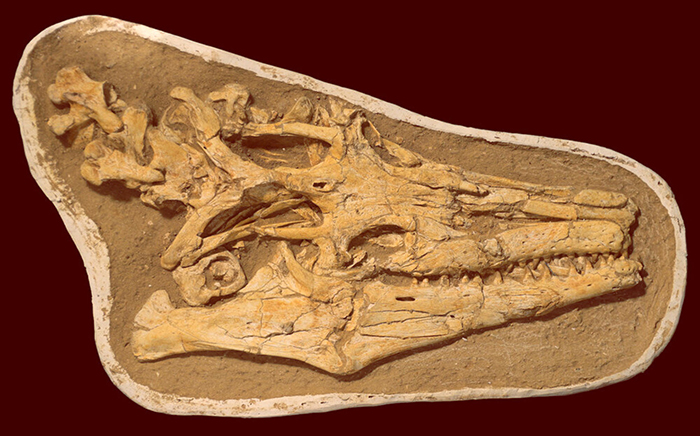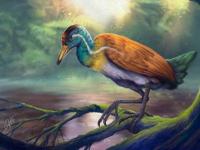Pluridens serpentis: New Mosasaur Species Unearthed in Morocco

Paleontologists have described a new species of mosasaur based on two complete skulls and jaws found in Morocco.
Mosasaurs (family Mosasauridae) were specialized marine lizards that evolved and diversified during the Late Cretaceous period.
Their diversity peaked in the Maastrichtian age of the Cretaceous, between 72 and 66 million years ago, with the most diverse faunas known from Morocco.
While most of its relatives were small, just a few meters long, the new Moroccan species got big, perhaps 8 meters long.
Named Pluridens serpentis, the marine creature had long, slender jaws with numerous small, hooked, snake-like teeth to grab small prey like fish and squid.
Compared to related mosasaur species, it had smaller eyes, suggesting poor vision.
But its snout had dozens of openings for nerves, hinting at the ability to hunt by sensing water movements and changes in pressure. These nerves may have been sensitive to tiny variations in water pressure, an adaptation seen in marine snakes.
“Typically, when animals evolve small eyes, it’s because they’re relying more heavily on other senses,” said Dr. Nick Longrich, a paleontologist in the Milner Centre for Evolution at the University of Bath.
“The fact that Pluridens serpentis had so many nerves in the face may mean that it was using changes in water pressure to detect animals in low-light conditions, either at night or in deep, dark water.”
“If it wasn’t using the eyes, then it’s very likely that it was using the tongue to hunt, like a snake. Many aquatic snakes and lizards — sea snakes, filesnakes, water monitors — flick their forked tongues underwater, using chemical cues to track their prey.”

The discovery of Pluridens serpentis brings the number of mosasaurs known from the latest Cretaceous of Morocco up to 13.
“The diversity in these fossils is just astonishing. Far from declining in diversity, the mosasaurs seem to be peaking just before they went extinct,” Dr. Longrich said.
“We’re not seeing any evidence that this group was struggling before they went extinct. From an evolutionary standpoint, they were succeeding, they did everything right, but nothing can prepare you for an asteroid.”
“It’s a new species of a large predator which, with its 8 meter length, comes to confirm the diversity of the faunas of the seas just before the Cretaceous crisis,” said Dr. Nour-Eddine Jalil, a paleontologist at the Natural History Museum of Sorbonne University.
“Pluridens serpentis highlights the importance of the paleontological heritage of Morocco to help illustrate the history of life.”
“The latest discoveries show perfectly that the list of species present here is far from being closed and that the future still holds great surprises and discoveries,” said Dr. Nathalie Bardet, a paleontologist at the Muséum National d’Histoire Naturelle of Paris.
A paper describing the discovery was published in the journal Cretaceous Research.
_____
Nicholas R. Longrich et al. Pluridens serpentis, a new mosasaurid (Mosasauridae: Halisaurinae) from the Maastrichtian of Morocco and implications for mosasaur diversity. Cretaceous Research, published online May 8, 2021; doi: 10.1016/j.cretres.2021.104882
Source: www.sci-news.com/








